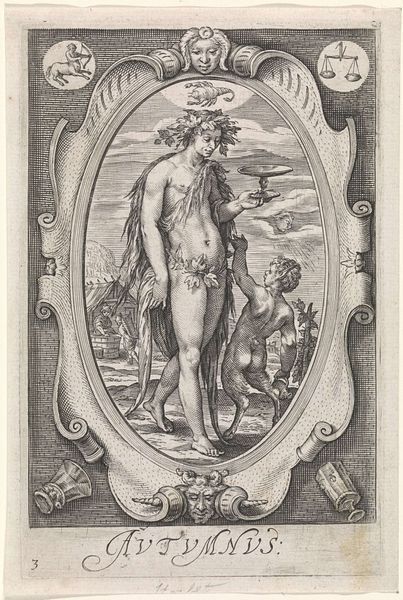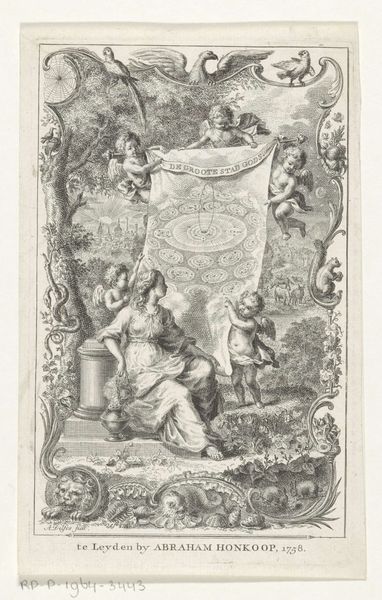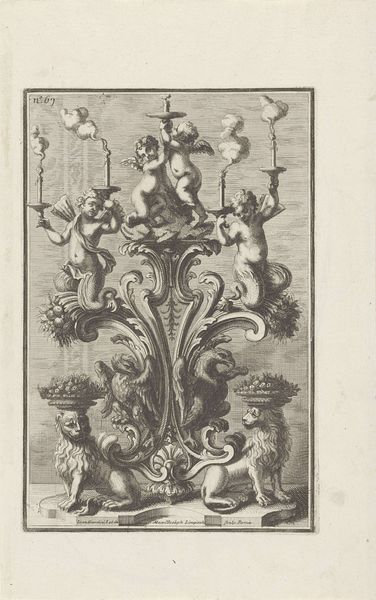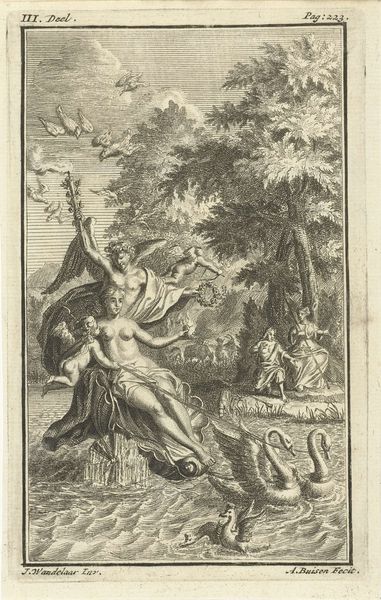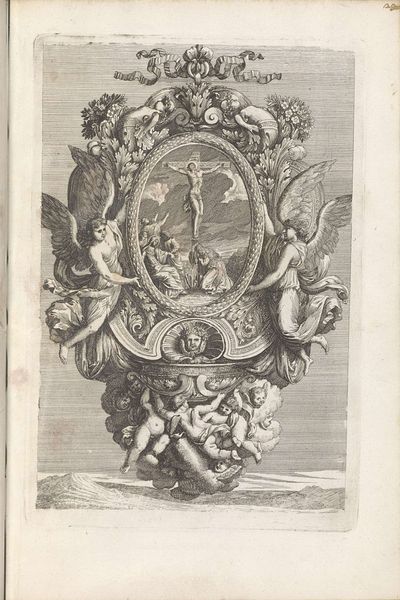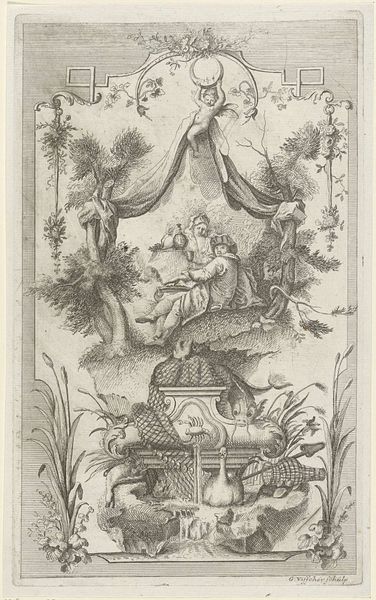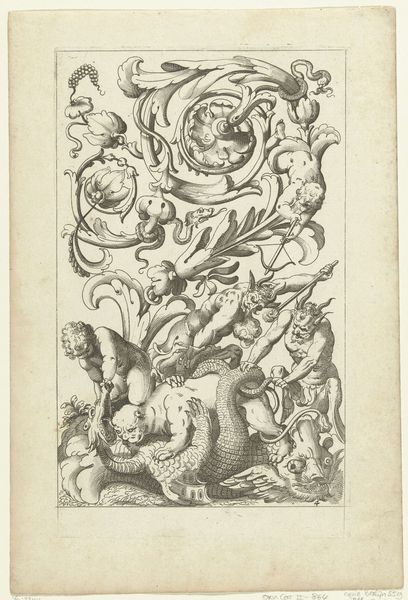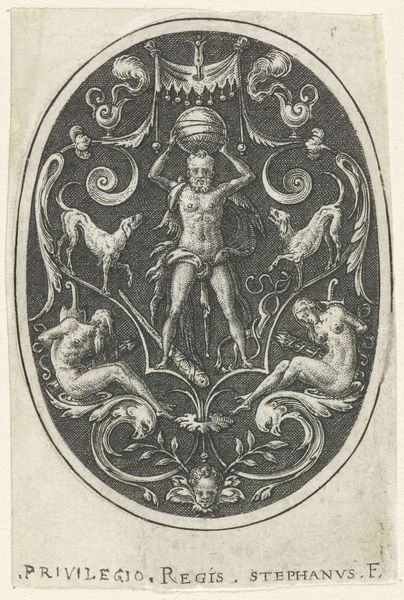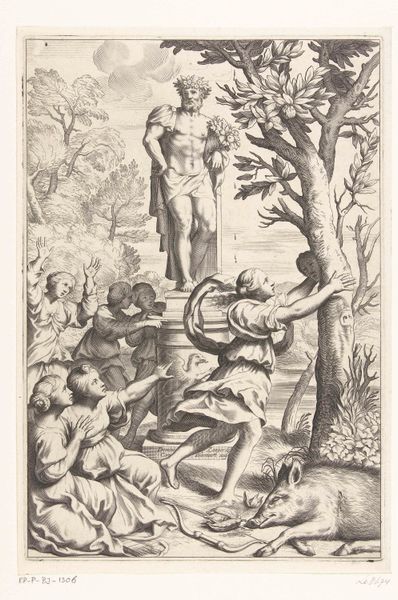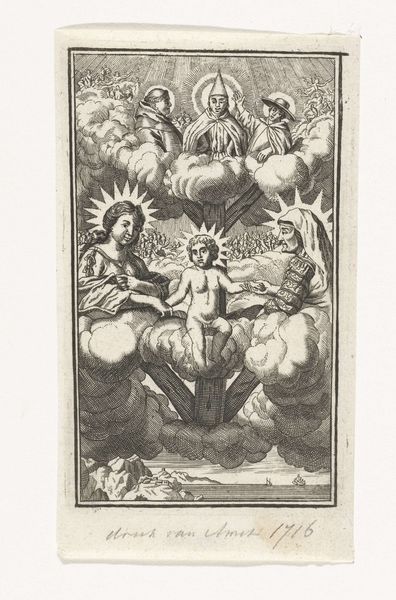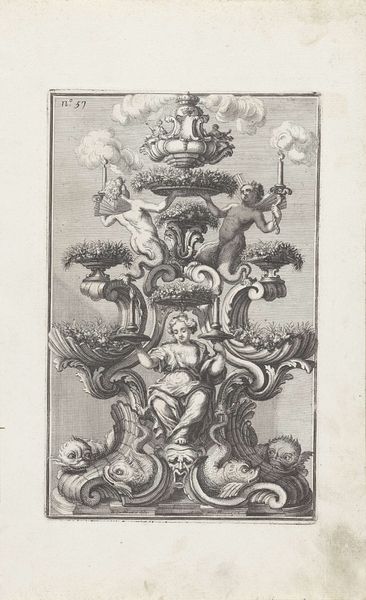
print, engraving
#
portrait
#
baroque
#
pen drawing
# print
#
figuration
#
line
#
engraving
Dimensions: height 138 mm, width 81 mm
Copyright: Rijks Museum: Open Domain
Curator: Bernard Picart created this engraving in 1713; it's called "Titelpagina met het portret van Ovidius op een medaillon"—Title Page with the portrait of Ovid on a Medallion. Editor: What strikes me immediately is the intricate detail rendered in line. It feels both dense and ethereal. Curator: Absolutely. We have to remember this print emerged during the Baroque period. The opulence isn’t just aesthetic; it signifies power and cultural capital. Ovid, though Roman, was experiencing a resurgence in popularity across Europe. Editor: Note how Ovid's laurel wreath almost merges into the border—the artist clearly wanted to celebrate his intellectual standing and perhaps emphasize the connection between classical knowledge and Picart’s era. Curator: The inclusion of Cupid perched atop the world globe further contextualizes the image. Ovid's works, especially "Metamorphoses" and "Ars Amatoria," delve deeply into love, desire, and the shaping of identity through myth. Editor: Indeed. There's a powerful sense of allegory at play here. What would you say is being allegorized? Curator: Perhaps Ovid's comprehensive influence. His exploration of love, transformation, and human nature positioned him as an extremely important figure for centuries to come. His tales resonated across cultural boundaries. Editor: And yet, observe the somewhat flattened perspective. Does that undermine the Baroque celebration of depth, dimensionality and dramatic flair? Curator: Perhaps. The flattening might speak to the limitations of printmaking at the time or the exigencies of creating a title page rather than an immersive visual experience. There may be intentional trade-offs to suit this work's intended practical application as an addition to an Ovid text. Editor: It is true—while ornate, this is clearly designed to frame and enhance rather than dominate the reading experience. The precision and the detail serve the text more than standing apart as high art. Curator: Exactly. So when we view Picart’s piece, it prompts questions about who and what society chooses to elevate, but also how their artistic contributions fit within the wider societal tapestry of any given historical moment. Editor: I find myself coming back to how effectively the circular structure focuses attention on Ovid—he emerges not just as a writer, but a brand. A reminder that celebrity and artistry are old, entwined concepts.
Comments
No comments
Be the first to comment and join the conversation on the ultimate creative platform.
